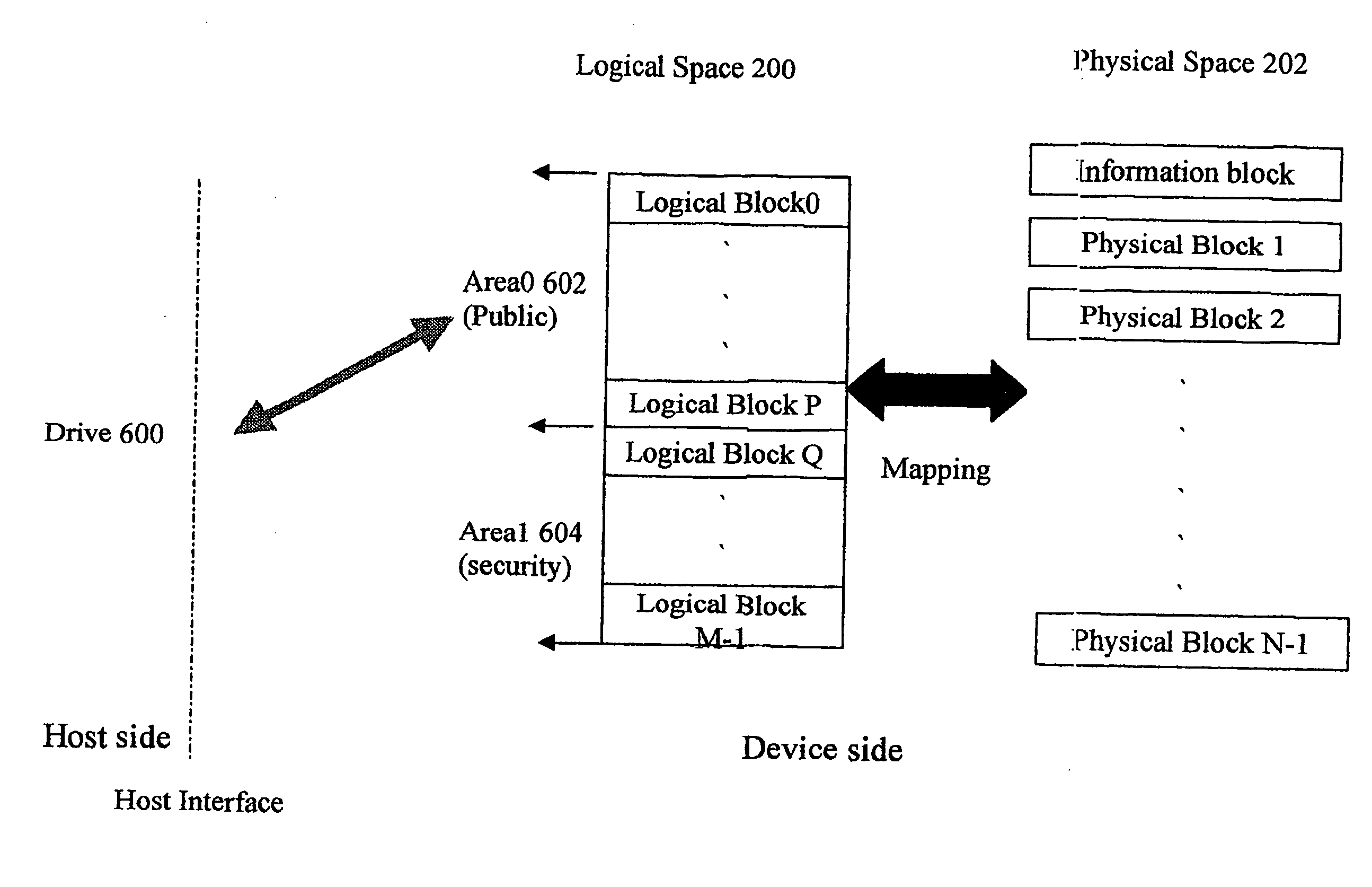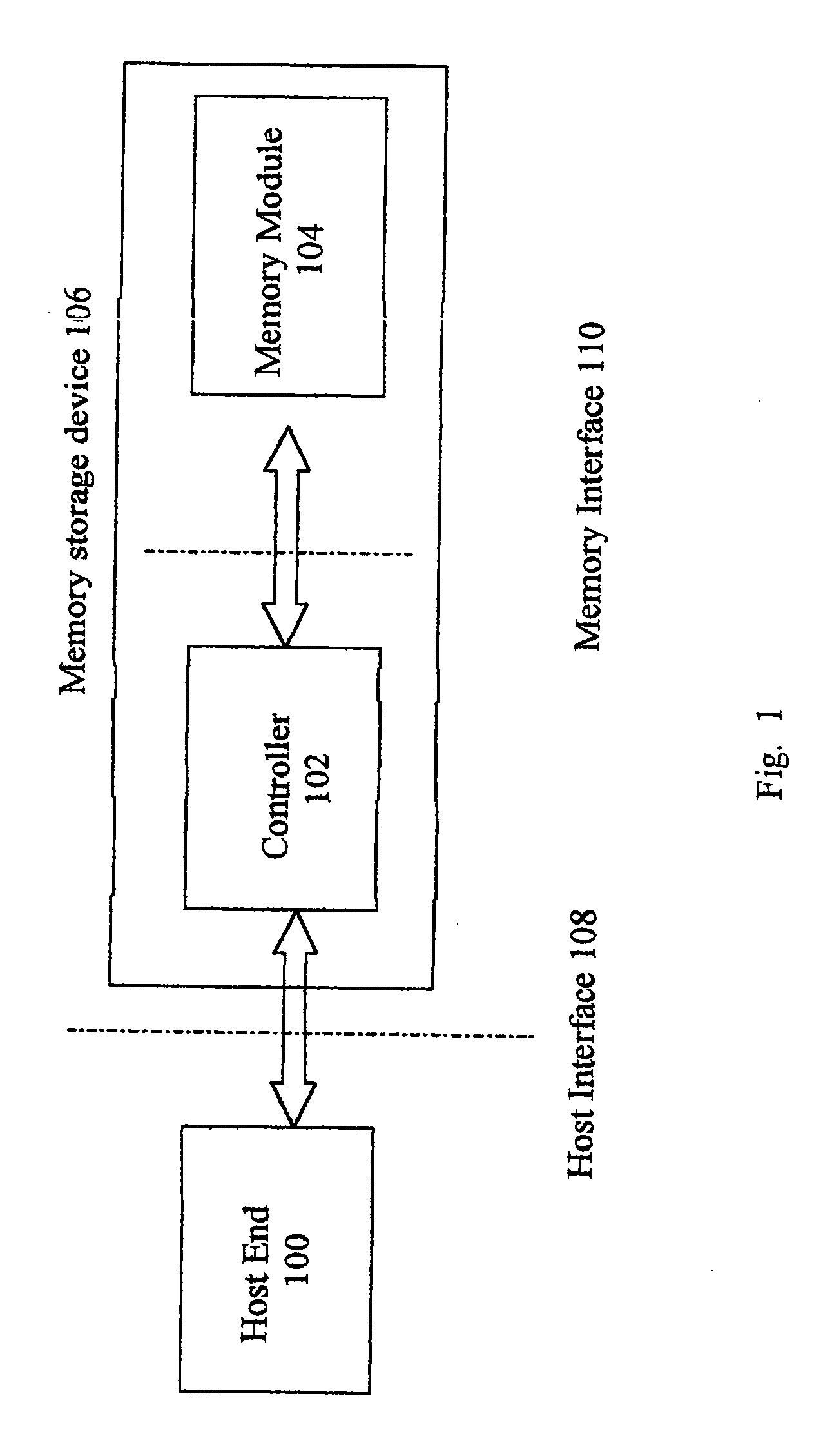Method for partitioning memory mass storage device
a mass storage device and memory technology, applied in the field of mass storage devices, can solve the problems of large weight of portable computer devices, inability to withstand physical shock, and high power consumption
- Summary
- Abstract
- Description
- Claims
- Application Information
AI Technical Summary
Benefits of technology
Problems solved by technology
Method used
Image
Examples
Embodiment Construction
[0020] A memory storage device generally comprises two portions; one is the controller and the other is the memory module. As shown in FIG. 1, the architecture of a memory storage device 106 consists of a controller 102, and a memory module 104. The controller 102 is coupled to host end 100 by host interface 108 and coupled to the memory module 104 by memory interface 110. The task of the controller 102 is to communicate with host end 100 and manage the memory module 104. The memory module 104 includes at least one memory chip, like flash memory, PROM, ROM, or EEPROM for storing data therein.
Logical to Physical Mapping
[0021] As shown in FIG. 2, a memory storage device is configured as a drive 204 by the host. From the host point of view, such a drive 204 includes a plurality of logical blocks, each of which can be addressed by the host; namely, the host can access all the logical space 200 including logical block 0, logical block 1, and logical block M-1. A memory chip generally i...
PUM
 Login to View More
Login to View More Abstract
Description
Claims
Application Information
 Login to View More
Login to View More - R&D
- Intellectual Property
- Life Sciences
- Materials
- Tech Scout
- Unparalleled Data Quality
- Higher Quality Content
- 60% Fewer Hallucinations
Browse by: Latest US Patents, China's latest patents, Technical Efficacy Thesaurus, Application Domain, Technology Topic, Popular Technical Reports.
© 2025 PatSnap. All rights reserved.Legal|Privacy policy|Modern Slavery Act Transparency Statement|Sitemap|About US| Contact US: help@patsnap.com



